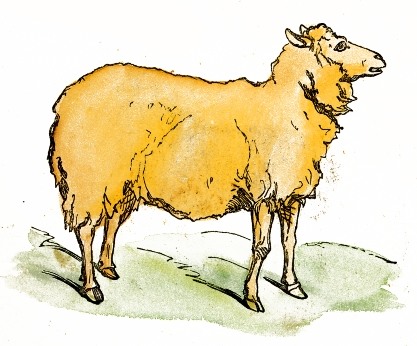Abraham
Guide your users in the one true path.

Abraham injects dynamically-generated Shepherd.js code into your Rails application whenever a user should see a guided tour. Skip a tour, and we'll try again next time; complete a tour, and it won't show up again.
- Define tour content with simple YAML files, in any/many languages.
- Organize tours by controller and action.
- Plays nicely with Turbolinks.
Requirements
Abraham needs to know the current user to track tour views, e.g. current_user from Devise.
Installation
Add abraham to your Gemfile:
gem 'abraham'
Install the gem and run the installer:
$ bundle install
$ rails generate abraham:install
$ rails db:migrate
Install the JavaScript dependencies:
$ yarn add jquery js-cookie shepherd.js
Require abraham in app/assets/javascripts/application.js
//= require abraham
Require a Shepherd.js CSS theme in app/assets/stylesheets/application.scss
//= require "shepherd.js/dist/css/shepherd-theme-default"
Shepherd.js provides the following themes:
shepherd-theme-arrowsshepherd-theme-arrows-fixshepherd-theme-arrows-plain-buttonsshepherd-theme-darkshepherd-theme-defaultshepherd-theme-squareshepherd-theme-square-dark
Update config/abraham.yml if you choose a different theme:
defaults: &defaults
:default_theme: 'shepherd-theme-arrows'
Tell Abraham where to insert its generated JavaScript in app/views/layouts/application.html.erb, just before the closing body tag:
<%= abraham_tour %>
</body>
</html>
Defining your tours
Define your tours in the config/tours directory. Its directory structure should mirror your application's controllers, and the tour files should mirror your actions/views.
config/
└── tours/
└── blog/
│ ├── show.en.yml
│ └── show.es.yml
└── articles/
├── index.en.yml
├── index.es.yml
├── show.en.yml
└── show.es.yml
NB: You must specify a locale in the filename, even if you're only supporting one language.
Tour content
A tour is composed of a series of steps. A step may have a title and must have a description. You may attach a step to a particular element on the page, and place the callout to the left, right, top, or bottom.
intro:
steps:
1:
text: "Welcome to your dashboard! This is where we'll highlight key information to manage your day."
2:
title: "Events"
text: "If you're participating in any events today, we'll show that here."
attachTo:
element: ".dashboard-events"
placement: "right"
3:
title: "Search"
text: "You can find anything else by using the search bar."
attachTo:
element: ".navbar-primary form"
placement: "bottom"
Abraham takes care of which buttons should appear with each step:
- "Later" and "Continue" buttons on the first step
- "Exit" and "Next" buttons on intermediate steps
- "Done" button on the last step
Testing your tours
Abraham loads tour definitions once when you start your server. Restart your server to see tour changes.
If you'd like to run JavaScript integrations tests without the Abraham tours getting in the way, clear the Abraham configuration in your test helper, e.g.
Rails.application.configure do
config.abraham.tours = {}
end
Contributing
Contributions are welcome!
Create a feature branch (using git-flow) and submit as a pull request.
Everyone interacting in Abraham's codebase, issue tracker, etc. is expected to follow the Contributor Covenent Code of Conduct.
Testing
Testing locally
This Rails engine contains a test app called dummy with controller and system tests. They'll all get run with rails t.
Final testing should be done in a standalone Rails app, following the README instructions.
To install the abraham gem with a local path:
gem 'abraham', path: '~/Workspace/abraham'
Automated testing
We use TravisCI automatically testing this rails engine. For test history, venture over to TravisCI.
Releasing
Create a git-flow release:
$ git flow release start VERSION_NUMBER
Edit lib/abraham/version.rb and increase the version number.
Build the gem and push to Rubygems:
$ rake build
$ gem push pkg/abraham-VERSION_NUMBER.gem
Finish the git-flow release and push to GitHub:
$ git flow release finish
$ git push origin develop
$ git push origin master
$ git push --tags